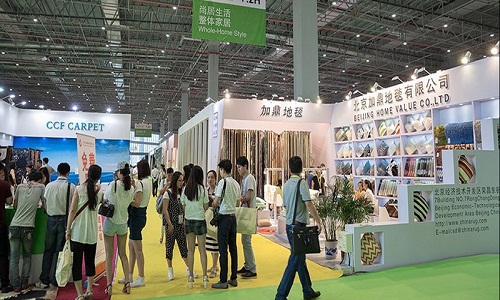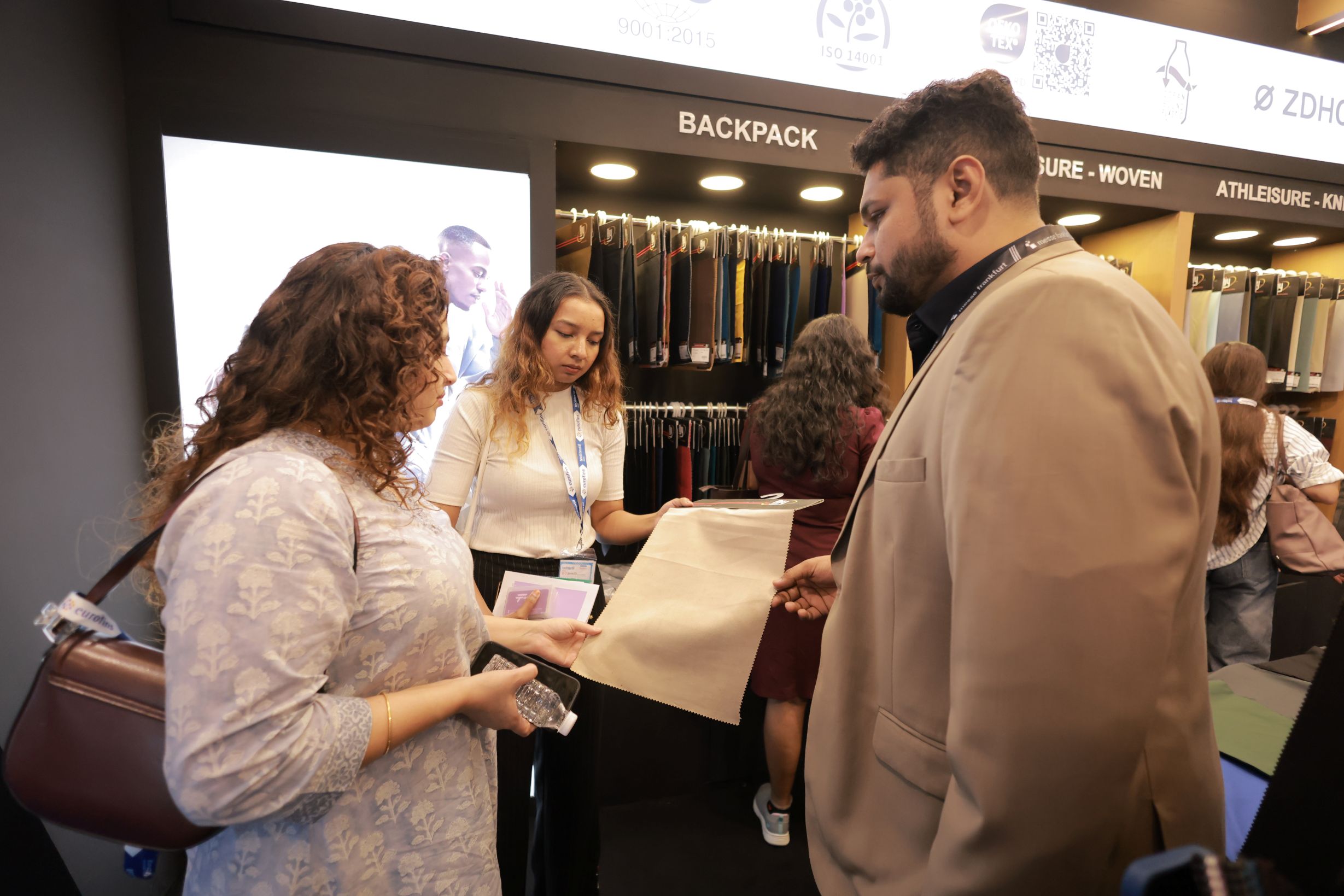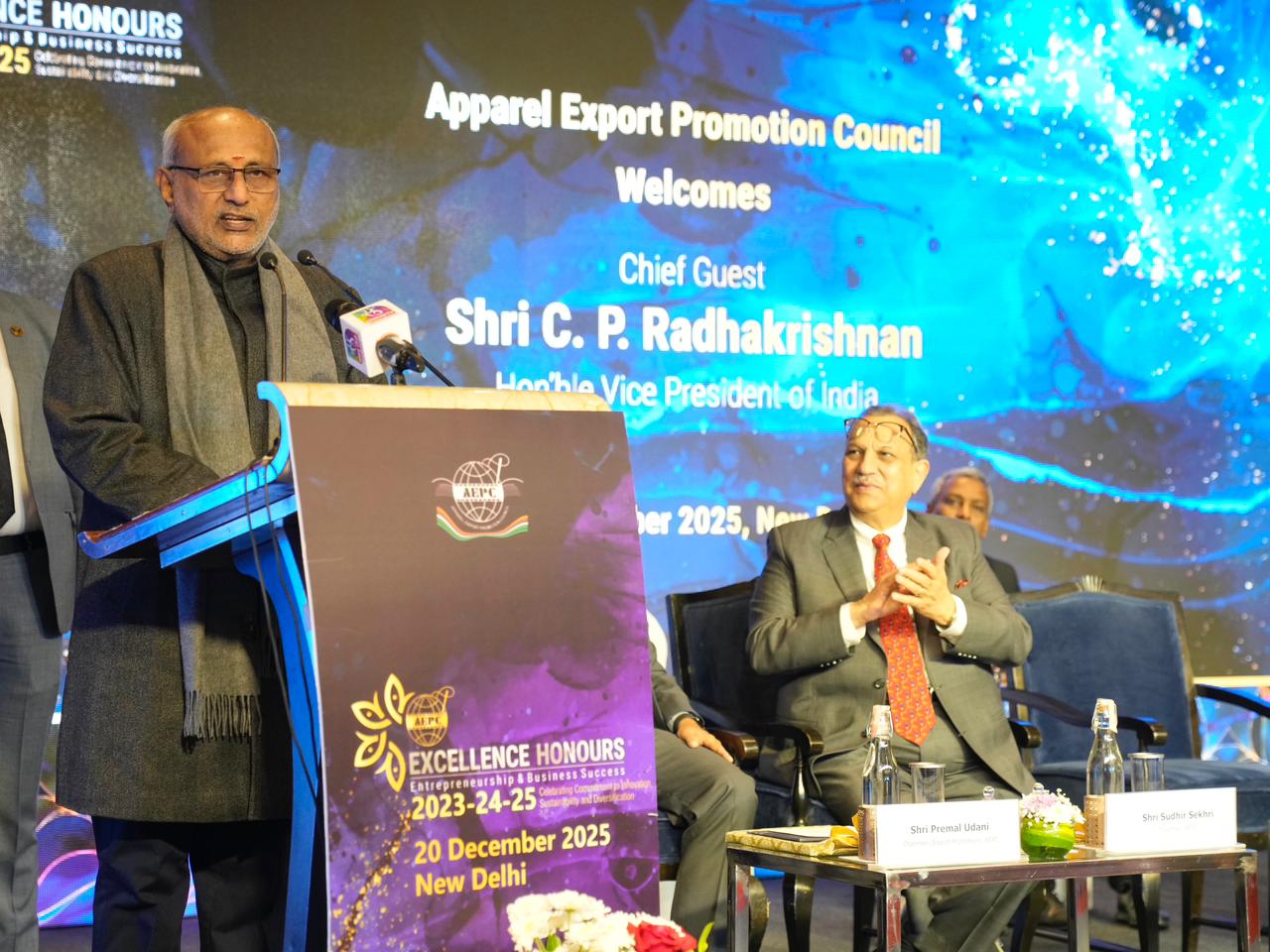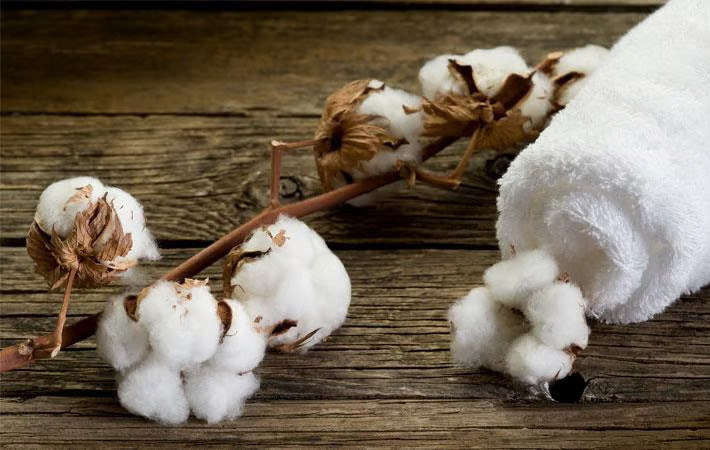FW
Bangladesh’s earnings from exports of jute and jute goods in the first seven months of the current fiscal rose 17.36 per cent from the corresponding period in the previous fiscal year. The country has undertaken various projects such as conducting more research, formulating new regulations, reforming jute mills, and imposing an eco-tax on polythene to encourage people to use jute products. A memorandum of understanding has been signed with a Chinese company for modernization of three jute mills.
Jute is called the golden fiber of Bangladesh. It is in demand in around 60 countries. The country has taken special measures to produce quality jute and diversify jute products. Along with extending policy support, cash incentives have been increased for diversification of jute products.
Thousands of jobs have been created by small and medium jute mills. Jute production has increased from 65 lakh bales in 2014 to 70 lakh bales last year. A rule has made jute use mandatory in goods packaging. More than 100 crore sacks were additionally produced due to the rule and entrepreneurs expanded their export base by increasing the types of jute goods from 135 last year to 240 this year. There is a 20 per cent subsidy for diversification.
"Cynosure of textile world the larest ever Intertextile Shanghai Apparel Fabrics – Spring Edition opened today. This joined by four other international textile fairs create the industry’s biggest spring/summer gathering for the entire supply chain. For Intertextile Shanghai alone, a total of 3,386 exhibitors from 22 countries and regions will feature this year."

Cynosure of textile world the larest ever Intertextile Shanghai Apparel Fabrics – Spring Edition opened today. This joined by four other international textile fairs create the industry’s biggest spring/summer gathering for the entire supply chain. For Intertextile Shanghai alone, a total of 3,386 exhibitors from 22 countries and regions will feature this year.
More than 70,000 trade buyers from 100-plus countries and regions are at the fair and will have at their fingertips everything from fabrics for women’s wear, menswear, suiting, shirting, lingerie and swimwear to high-end wool fabrics, original pattern designs, functional and performance fabrics, sustainability products & services, digital printing technologies, garment & fashion accessories and more. As the global textile industry’s most comprehensive sourcing summit for spring/summer season, Intertextile Shanghai Apparel Fabrics is the ideal place to find latest developments in product innovation and sustainability. This is especially true in the fair’s Beyond Denim zone, which this edition will feature over 110 exhibitors from China, Japan, Pakistan, Turkey and elsewhere.

“This is the ninth consecutive year of expansion in the exhibitor number for the Spring Edition, which has increased a remarkable 130 per cent in the four years since it moved to Shanghai. The next three days will once again show why Intertextile Shanghai, with its unrivalled number of quality suppliers and buyers together in one place, is the key sourcing destination for the industry’s order writers. With not only the full fabrics and accessories product spectrum on display, but across all price and quality points too, the fair is the most efficient and effective way to discover new suppliers and make purchasing decisions,” said Ms Wendy Wen, Senior General Manager of Messe Frankfurt (HK).
The Highlights
Top domestic bedding & towelling brands including A-Fontane, Cotton Field Home, Loftex China, Mercury Home Textiles and Violet Home Textile are here looking for potential franchisees and agents. Some of the well-known international players like Cotton USA and Asahi Kasei will also present their up-to-date products and technologies at the fair. OEMs from the regions of Tongzhou, Haimen, Zhenze, Pujiang, Huzhou, Tongxiang Zhouquan and Gaoyang will showcase their specialty products ranging from bedding, silk products, silk quilts, towelling to quilts and more. Machinery Equipment Zone will be cooperating with China Sewing Machinery Association for the first time to feature the Sewing Equipment Pavilion. In addition, some of the most advanced and efficient textile solutions such as automated production lines, smart logistic systems and computerised embroidery machines are also available. Fringe programme will feature comprehensive forums discussing topics including ongoing market trend, latest technology application and more.
Pathbreaking sessions
More than 35 seminars are scheduled throughout the three-day fair, with many under the Design & Trends category focused on S/S 19, and even A/W 19-20, trends. These include fabric, colour, accessories, women’s wear, viscose and other trends, and are conducted by industry experts such as WGSN, NellyRodi, Peclers Paris, Pantone, Promostyl, Italtex and Doneger Creative Services. Other categories include market information & business strategies, technology & solutions and sustainability issues. The latter also features presentations from many of the industry’s most trusted players, including Testex, SGS and Hohenstein.
Even more insight can be garnered from a number of panel discussions, held on the fair’s first two days. One of these is a must for anyone looking to understand retail environment of the denim and casualwear sectors. Titled ‘Denim’s next move – new opportunities to keep growing sales of jeans and casualwear at retail’, the panel will discuss what consumers really want in jeans and casualwear and share their companies’ latest innovations that will help brands and retailers drive sales and profits. Supported by Invista, the panel is moderated by Jane Singer of Inside Fashion, and includes panellists from Invista, Prospeirty Textile, Advance Denim, Guangzhou Conshing Clothing and Texhong. Two other panel discussions include ‘Application of Artificial Intelligence (AI) in the Textile Industry’ and ‘Sustainable Textile Products & Their Manufacturing in Bangladesh’.
Revamped Fast Fashion & Digital Printing Forum
To be held on Day 2 of the fair, the Fast Fashion and Digital Printing Application Forum features a full day of informative seminars. The forum will commence with a presentation on the findings of a six-month study conducted by Fashion Print, a Chinese publication, for which they visited hundreds of textile companies, printing and dyeing enterprises, as well as their suppliers to produce a research paper on the digital textile printing market and technology. This is followed by sessions on fast fashion technology and trends, and in the afternoon on digital printing applications. Rounding out the day will be a series of discussions on topics such as flexible supply chains, business opportunities created by digital printing and IP protection.
Developed by renowned trend experts from Tokyo, New York, Milan and Paris, the Intertextile Directions Trend Forum will present three trends for Spring / Summer 2019 under the overall theme ‘Dialogue’: @ sense, # couture and e. native. Exhibitors’ fabrics will illustrate the colour, fabric and print styles of each trend. The lead designer for this Trend Forum is Doneger Creative Services (DCS) in New York. Mr Kai Chow, a Director at DCS, will host tours at the forum explaining the latest in design trends through fabric displays and seasonal trend stories.
In addition to Intertextile Shanghai Apparel Fabrics, four other textile fairs also take place at the National Exhibition and Convention Center: Yarn Expo Spring, Intertextile Shanghai Home Textiles – Spring Edition, fashion garment fair Chic and knitting fair PH Value. Intertextile Shanghai Apparel Fabrics – Spring Edition 2018 is co-organised by Messe Frankfurt (HK) Ltd; the Sub-Council of Textile Industry, CCPIT; and the China Textile Information Centre.
The US cotton market is facing a surge in demand. Typical demand factors include a change in consumers’ tastes and preferences (a switch from the acid-based crude oil polyester as well as the desire for a pollution-free fiber). The price competition between polyester and cotton has shifted towards cotton. This was led by China cracking down on polyester manufacturing facilities because of water and air pollution. Additionally, consumers are again expressing a desire to return to the comfort offered by cotton.
The past week established a near lifetime record of weekly sales and shipments. More such weeks will be forthcoming. The Australian and Brazilian crops are essentially sold out, and Indian export sales are delayed and limited. Thus, the demand for US cotton – already one of the cheaper growths in the world – will do nothing but boom.
A counter-cyclical tariff on cotton by Turkey could disrupt some established trade flows, but the critical shortage of US quality cotton this year and the next would mean that the solid Turkish market honed out by US merchants and cooperatives would shift to other export locations and US export volume would not be hurt. Simply, Turkey would end up paying more for cotton than it currently does.
For 2018-19 global cotton stocks are projected to decline by six million bales, the lowest level since 2011-12. Stocks in China are expected to fall significantly as consumption continues to rise at a rate faster than the world average, production declines slightly, and imports will be limited, thus allowing continued reductions in the State Reserve.
Outside China, despite a forecast of lower production, rest-of-world stocks are expected to rise for the third consecutive year as an expected modest growth in consumption and relative weak import demand by China leave supply higher than demand. US cotton exports are projected at a 13-year high of 16 million bales in 2018-19, due to expectations of a large exportable surplus. The US share of world trade is projected to rise. Ending stocks are projected little changed at six million bales, but would be the highest level since 2008-09.
Greater supplies outside of China are expected to pressure cotton prices in 2018-19 with the average price received by producers falling within the range of 58 to 68 cents per pound, compared with the 2017-18 current forecast of 69 cents.
For 2017-18, global production and trade are both raised. Production is raised due to expected higher production in Australia and Sudan, partially offset by lower production in Uzbekistan and the United States.
Apparel Export Promotion Council (AEPC) kickstarted the first of fashion forecasting seminars in the month of November 2017 for autumn/winter 2018-19.
The second series of seminars began on March 9, 2018, from Mumbai for the spring/summer 2019 season.

The season is divided into three broad themes, Common Ground, In Touch and Creative Manifesto. The context for Common Ground is de-globalization in a connected world. For better or for worse, the current political landscape will have lasting effects on globalization, well beyond 2019. In a time of de-globalization, many consumers and countries will turn away from the world economy and focus on domestic growth. At the same time, many people long to connect both locally in real life and globally through social media. It’s time to find a common ground.
In Touch highlights that in the time of constant change, consumers swing between tracking their personal data, social media and the news to wanting to opt out entirely. One thing is for sure, people will want to get back in touch with the things that touch them, both emotionally and physically, including sexuality, moods, microbes and food.

The context for Creative Manifesto is the inequalities and pressures for conformity. In a world in which people are clamoring for truth and transparency, manifesting a desire to be different, to be heard and make an impact, creativity and self expression will flourish, both above and underground. In such times of upheaval, creativity should be encouraged in both business and design as a weapon for change.
The seminars are being organized by AEPC in association with WGSN, the leading trend forecasting agency of the world. The speaker at the event will be Kim Mannino, head of WGSN LIVE, from the WGSN London office. Kim is a very seasoned and experienced professional and has worked for over 30 years in the industry. She has worked with Promostyle for over 20 years and is currently leading the live presentations division of the company.

All the above trends will be brought to life by 3D mood boards developed by WGSN and key commercial items of the season which were developed in-house by WGSN clients in India.
The seminars are being organized in Mumbai on March 9, 2018; Bangalore on March 11, 2018; Ludhiana on March 12, 2018; and Noida on March 13, 2018.
Hong Kong Polytechnic University and Alibaba have jointly established a fashion dataset for systematic analysis and labeling of fashion images based on fashion characteristics and key points of a piece of clothing. By integrating fashion knowledge and machine learning formulation, the establishment of the dataset will enable machines to better understand fashion, bringing a new horizon to the fashion retail industry through the application of AI (Artificial Intelligence).
The dataset can greatly facilitate understanding fashion images and related algorithm design and developing machine learning. It would help improve the accuracy of online fashion image searching, enhance the effectiveness of cross-selling and up-selling, create an innovative buying experience and facilitate the customization of online shopping platforms.
Fashion attributes are the basic design elements of an apparel and their combination determines the product category and styles of a fashion item. With the wide variety of fashion attributes, attribute recognition is a complicated process. A systemic classification of fashion attributes is essential to accurately label fashion attributes, facilitating research on deep learning and algorithm design for fashion image searching, navigating tagging and mix-and-match ideas, etc.
Fashion AI is a bridge that connects AI with fashion. It aims to explore the wider applications of AI in scenarios including fashion mix-and-match with the hope of bringing new values to the fashion industry.
The US has been running a trade deficit with India for several years. Trade surplus means that we export more to the US than we import from the country. Increasingly protectionist measures by the US, however, threaten to derail the global economic growth engine. India’s exports account for a hefty 15 per cent of the US’ aggregate trade with the world.
Gems and diamonds are India’s biggest goods exports to the US, followed by pharmaceuticals, textiles, fish and petroleum products. As of now, these exports are not on the radar of the US, but there is a risk of retaliatory tariffs on these goods.
An all-out trade war will prove detrimental to global markets. Global economic growth hinges on the free movement of goods. The US has come down heavily on higher import duty on US-made Harley Davidson motorbikes. It previously threatened to slap retaliatory taxes on motorcycles coming into the US from India.
While India responded by slashing customs duty on imported high-end motorcycles to 75 per cent from the earlier 100 per cent, and eventually cut it down to 50 per cent, the US was left unimpressed and made it clear that the cuts were not enough.
Nepal’s readymade garments exports in the first half of the current fiscal increased 11 per cent compared to the corresponding period of the previous fiscal. However, the expiry of the multi fiber agreement in 2005 has hit the industry hard. The agreement provided duty-free access for Nepali garments to the US. Since then, over 85 per cent of garment factories have pulled their shutters.
Nepali readymade garment producers feel if they are given facilities they can be more competitive in the global market. As of now the high cost involved in importing raw materials and exporting finished products is the major reason for Nepali garments being less competitive in the international market.
Incentives to the sector can have a significant impact on the growth of small and medium enterprises, ancillary industries and also generate jobs. A garment processing zone is being developed to promote the export of readymade garments. The aim is to revitalize the garment sector by providing low-cost financing for investment in the latest machines and kick start the economy. The industry has asked for tax incentives and export incentives.
Major export destinations for Nepali garment products are the European Union, India and the US, among others.
The Bangladesh Garment Manufacturers and Exporters Association (BGMEA) has filed an application before the Supreme Court, seeking another year for relocating its office, constructed at Dhaka's Hatirjheel in violation of environmental laws. On October 8 last year, the Supreme Court had given the BGMEA seven more months to demolish its office. A five-member apex court bench, headed by Chief Justice in-charge Abdul Wahhab Miah, passed the order.
The 16-storey building was constructed in the Hatirjheel area in 2006. The headquarters, popularly called BGMEA Bhaban, was built in a prime location in violation of the Wetlands Protection Act. The Rajdhani Unnayan Kartripakkha (Rajuk) has allocated a land in Sector 13 of Uttara in Dhaka for constructing the BGMEA office complex. But BGMEA needs more one year time for relocating its 15-storey building from Hatirjheel area.
The BGMEA has been ordered to demolish the 15-storey building named ‘BGMEA Complex’ which stands on a critical spot in the capital, blocking the connection between two large water bodies Hatirjheel lake and Begunbari canal. If BGMEA would fail to follow through, Rajuk was instructed to take over the work within 90 days of receiving the copy of the verdict. In this case, they would get the cost of the demolition from BGMEA.
The BGMEA building was built about two decades ago, endangering wetlands in Dhaka. In 1998, then Prime Minister Sheikh Hasina laid the foundation stone of the building. The construction began the same year. The building was inaugurated in 2006 by Khaleda Zia as the prime minister.
The BGMEA has created a fund for constructing its new office-building and the construction work is going on.
Bangladesh is looking to extract viscose from raw jute. This semi-synthetic fiber is seen as a substitute for cotton and capable of meeting the growing demand for cotton. Bangladesh has sent raw jute to Finland and Sweden for further feasibility studies for its possible use for viscose production. Viscose yarns are soft, strong, bright and of highly quality. Cellulose, a basic component in green jute plants, is the main element of viscose. About 65 per cent cellulose content in jute plants is the basic ingredient of viscose.
Bangladesh’s textile mills import cotton in huge amounts. A positive outcome would help Bangladesh save huge amounts of foreign exchange annually now spent for cotton imports. The country annually produces just 1.50 lakh bales of cotton against the domestic demand for 55 lakh bales.
Bangladesh is the largest cotton importer and consumer worldwide. More than 90 per cent yarns and fabrics are made from cotton. The country imports more than 60 per cent of its required cotton from India, the single largest source of the raw material for the country. The shorter lead time is very necessary for the garment business. Bangladesh is the only country that is still dependent on raw cotton for making yarns and fabrics.












